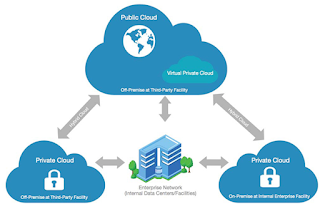What is disaster recovery, RPO and RTO?
Let’s face the fact: Disasters occur.
There can be floods, fires or cyclones. There can even be a cyber attack or a ransomware attack. Organizations can’t afford to be non-operational because of regional power outages, cyber attacks or hardware failures. Every minute applications and systems are down translated into lost revenue.
2015 disaster recovery statistics suggest that downtime lasting for one hour can cost
- small companies as much as $8,000,
- mid-size organizations $74,000, and
- large enterprises $700,000.
As IT systems have become increasingly critical to the smooth operation of a company, and arguably the economy as a whole, the importance of ensuring the continued operation of those systems, and their rapid recovery, has increased. For example, of companies that had a major loss of business data, 43% never reopen and 29% close within two years. As a result, preparation for continuation or recovery of systems needs to be taken very seriously.
You might not be able to prevent disasters from happening, but with a solid disaster recovery plan in place, you can be ready for them when they hit and ensure the least amount of impact to your business.
Disaster recovery involves all the methods to recover the functionality of the existing IT infrastructure after the disaster occurs
It is a part of a business continuity plan (BCP) in organizations.
What does Disaster recovery include?
Usually, enterprises have a disaster recovery plan in place with an IT managed service organization (I will cover the components of a disaster recovery plan in the next article).
Usually, two objectives are defined when implementing disaster recovery-
What is RPO?
When a disaster occurs, there is a loss of business continuity. RPO defines the maximum targeted period in which data (transactions) might be lost from an IT service due to a major incident.
With an RPO defined, we know that all may not be lost due to data backed up in various file systems such as cloud, servers, storages, etc. An RPO in a disaster recovery plan involves stating the frequency of backups i.e. how often should backups be done in an organization to protect the data.
For example, with a DR in place, you define an RPO of 20 minutes. This means that data will be backed up at an interval of every 20 minutes. However, if a disaster that occurs in the next 10 minutes ( meaning that you lose data of the next 10 minutes), affects the functionality in your organization will mean an inaccurate definition of RPO. If your operations are not affected, it will mean that RPO is correctly defined.
What is RTO?
An RTO determines the maximum amount of downtime that the organization can handle. It involves determining the maximum amount of time within which the IT function should be restored without affecting the business continuity of the organization.
For example, if an organization has an RTO of two hours, it cannot be down for longer than that. This means that the organization needs to recover files from backup storage and resume normal operations within 2 hours.
The RTO is a function of the extent to which the interruption disrupts normal operations and the amount of revenue lost per unit time as a result of the disaster. These factors, in turn, depend on the affected equipment and application(s). An RTO is measured in seconds, minutes, hours, or days and is an important consideration in disaster recovery planning.
Both RPO and RTO depend on the organization. These metrics then serve as limits to guide the choice of IT strategy, processes and procedures that make up an organization’s disaster recovery plan.
A disaster recovery plan provides a structured approach for responding to unplanned incidents that threaten a company’s IT infrastructure, including hardware and software, networks, procedures, and people.



Comments
Post a Comment